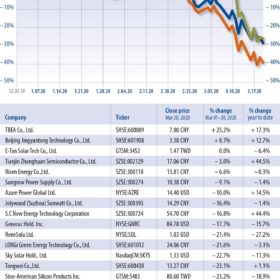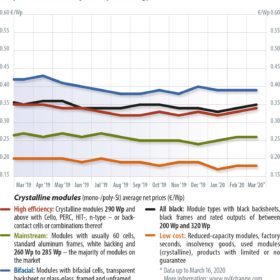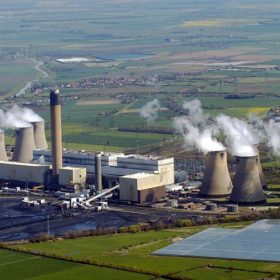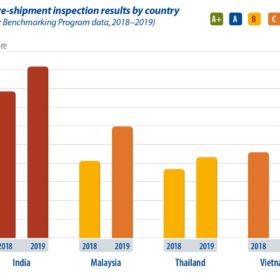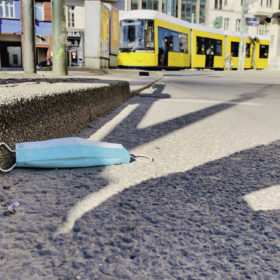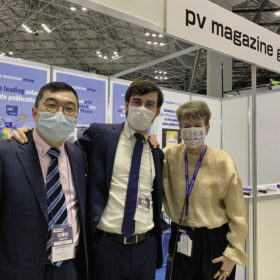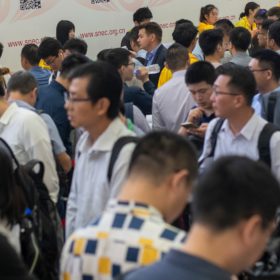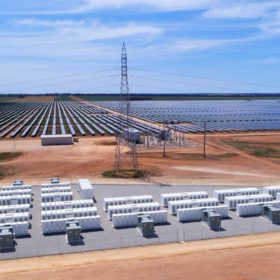Life after Covid-19
Whether it’s two, three, six months or more, there will be an end to the Covid-19 pandemic. But when restrictions begin to lift and the “hammer” becomes the “dance” stage of the management strategy, various segments of the solar market will burst back to life. But where will it leave us? Some argue that such […]
Covid-19 and oil supply shock
In the last edition, we were concerned about the looming outbreak of Covid-19, but we never imagined it would decapitate global economies, while the Saudis devastated the U.S. fossil fuels industry.
Covid-19 beats Fridays for Future
I am not alone in seeing parallels between the threat posed by the virus and the need to advance the fight against climate change. Unfortunately, the only fundamental difference between the two crises is how we deal with them. To contain the spread of Covid-19, heads of state and regional politicians are imposing measures that become more drastic by the day. But when it comes to the climate crisis, hope seems to be the guiding principle. At some point we will come up with something that prevents or reverses climate change; the main thing is to keep the economy roaring and to not make any serious changes.
Decommissioning coal – an opportunity for energy storage?
Coal has underpinned power generation for more than a century as a cheap, reliable and well understood technology, writes IHS Markit analyst George Hilton. Decommissioning of coal generation, in light of global efforts to reduce carbon emissions, will radically change the energy landscape and potentially leave a substantial gap to be filled by energy storage technologies.
Wafer size transition in the midst of Covid-19
As the Covid-19 pandemic takes the world by storm, global supply chain operations remain disrupted, and solar exhibitions that were held in the first quarter of the year saw fewer manufacturers displaying their latest products.
Quality benchmarking in times of tariffs
The PV industry’s rapid factory expansions and quick product rollouts lead to a constant balancing act between the streamlining of production and the introduction of new features to push the boundaries of power generation and achieve lower LCOE. Given these competing factors, CEA has brought together its data based on experience in providing third-party quality assurance oversight to produce its Supplier Benchmarking Program. Joseph Johnson, CEA’s lead analyst for solar and storage, digs into the data.
PV in the pandemic
“Unprecedented” appears to be a frequently used term to describe the Covid-19 crisis that the global economy, our societies and healthcare systems are now facing. And while outbreaks of severe and potentially life-threatening diseases have occurred at various stages in the modern age, our globally connected reality today means that the coronavirus could have impacts that are truly without precedent.
Last event standing
It should have been among the first major trade show events of 2020, but it has ended up being one of the last – for a couple of months, at least. Tokyo’s World Smart Energy Week, of which PV Expo is a part, was held at the end of February, with considerably fewer visitors and exhibitors filling the trade show floor, as the coronavirus pandemic began to unfold.
Event horizon
The wave of cancellations in the face of the Covid-19 pandemic starkly illustrates the solar industry’s reliance on trade shows, conferences, and other events. Event organizers, exhibitors, and attendees from across the supply chain are now eagerly investigating alternatives, given the current restrictions and broader uncertainty regarding the future. While it’s too early to draw conclusions, it’s clear that there will be lasting effects on the way the industry operates when it comes to planning events and travel.
Faltering grid curtails, delays, stalls solar
It’s no secret that Australia’s surge in utility-scale solar and wind – some 4.4 GW commissioned in 2018-19, and a further 3.5 GW expected in 2020 – has overwhelmed sections of the grid. An array of actions and innovations spurred by a recent curtailment crisis in the West Murray region of New South Wales will help crack the code to successful energy transition in Australia and beyond.

